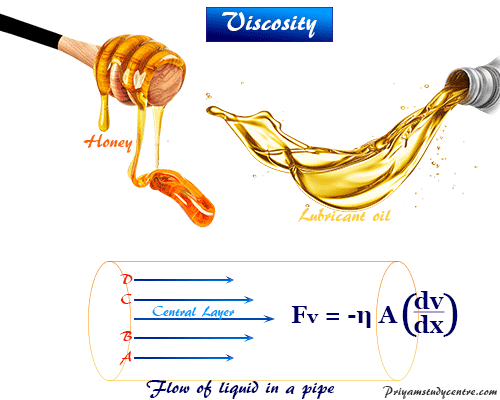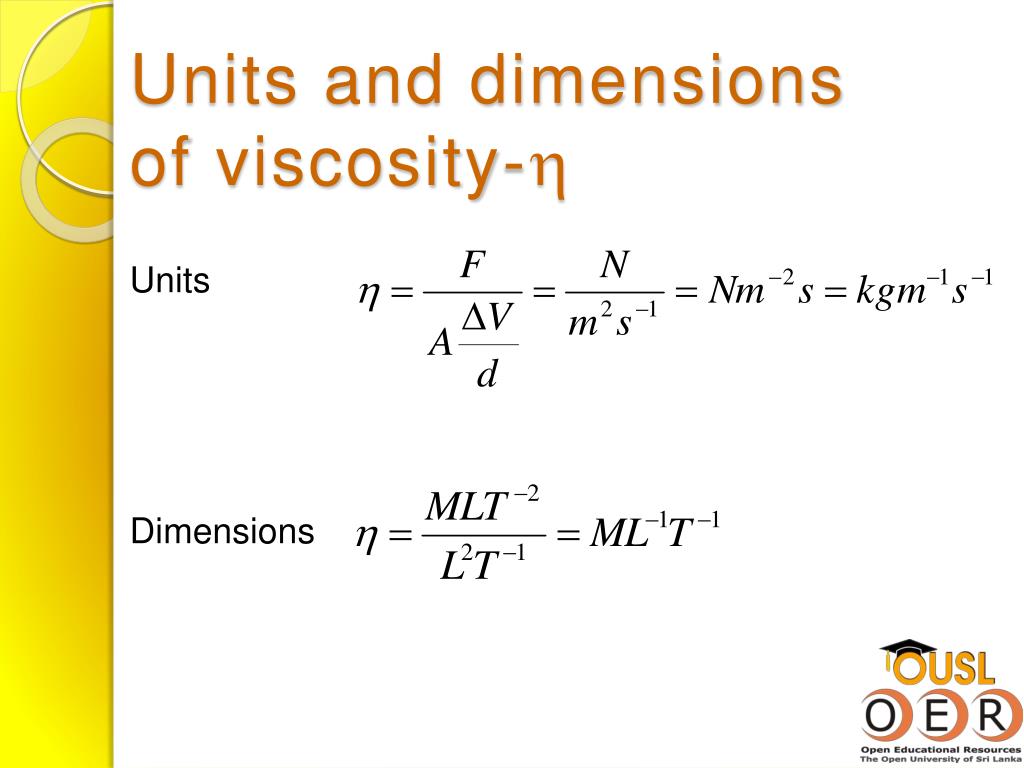

The viscosity of liquids almost always increases with pressure, with water being the sole exception. Around room temperature, the viscosity of water decreases by 3% per degree Celcius oils by about 5%, and bitumen by 15% or more. The temperature dependence of the viscosity of Newtonian liquids is such that the viscosity decreases with temperature, and in general, the higher the viscosity, the greater the rate of decrease with temperature.

(Prior to the introduction of the SI system, the cgs unit relevant to low viscosity liquids was the centipoise, which is identical to the mPas.) A form of viscosity often referred to is the kinematic viscosity, ν m 2s −1 which is the quantity we have defined above divided by the density of the fluid, ρ, i.e., ν = η/η. The units of shear stress are Pascals (Pa), shear rate reciprocal seconds (s −1), and so the unit of viscosity is the Pascal-seconds (Pas or Pa.s), with mPas being the more usual unit used for low viscosity fluids. The ratio of these two quantities is the viscosity hence η = σ/ The shear rate (sometimes called the strain rate or velocity gradient), which is the proper measure of the rate of deformation in the fluid undergoing shear flow. In shear flow-where we imagine the flow as hypothetical layers of fluid flowing over each other-we define the relevant parameters as (see Figure 1) σ the shear stress (force per unit area) at the boundary of the fluid to produce the flow, and Quantitatively, viscosity is defined as the stress in a particular ideal flow-field divided by the rate of deformation of the flow. Viscosity can depend on the type of flow (shear and/or extensional), its duration and rate, as well as the prevailing temperature and pressure. Viscosity is that property of a fluid which is the measure of its resistance to flow (i.e.


 0 kommentar(er)
0 kommentar(er)
